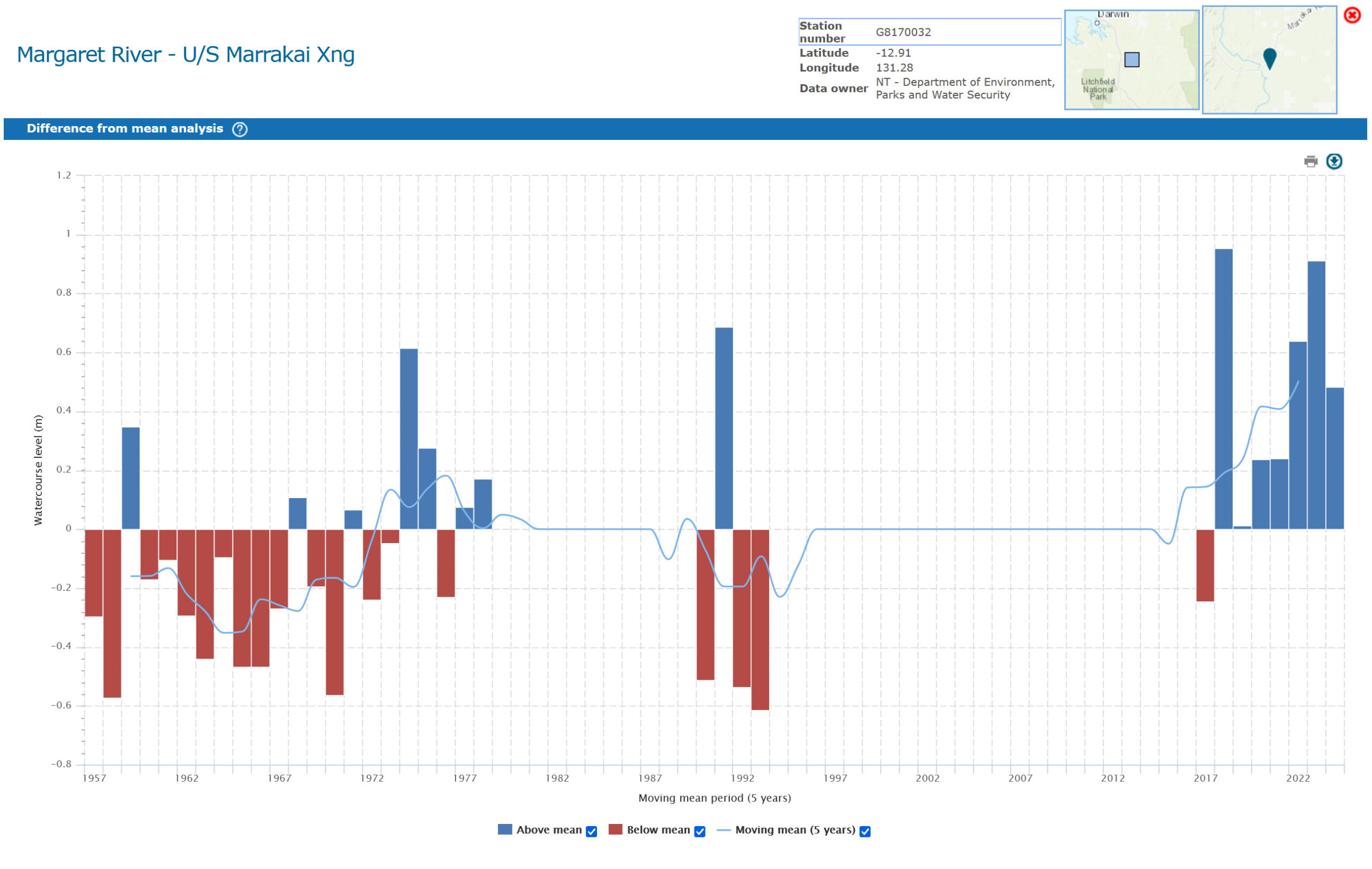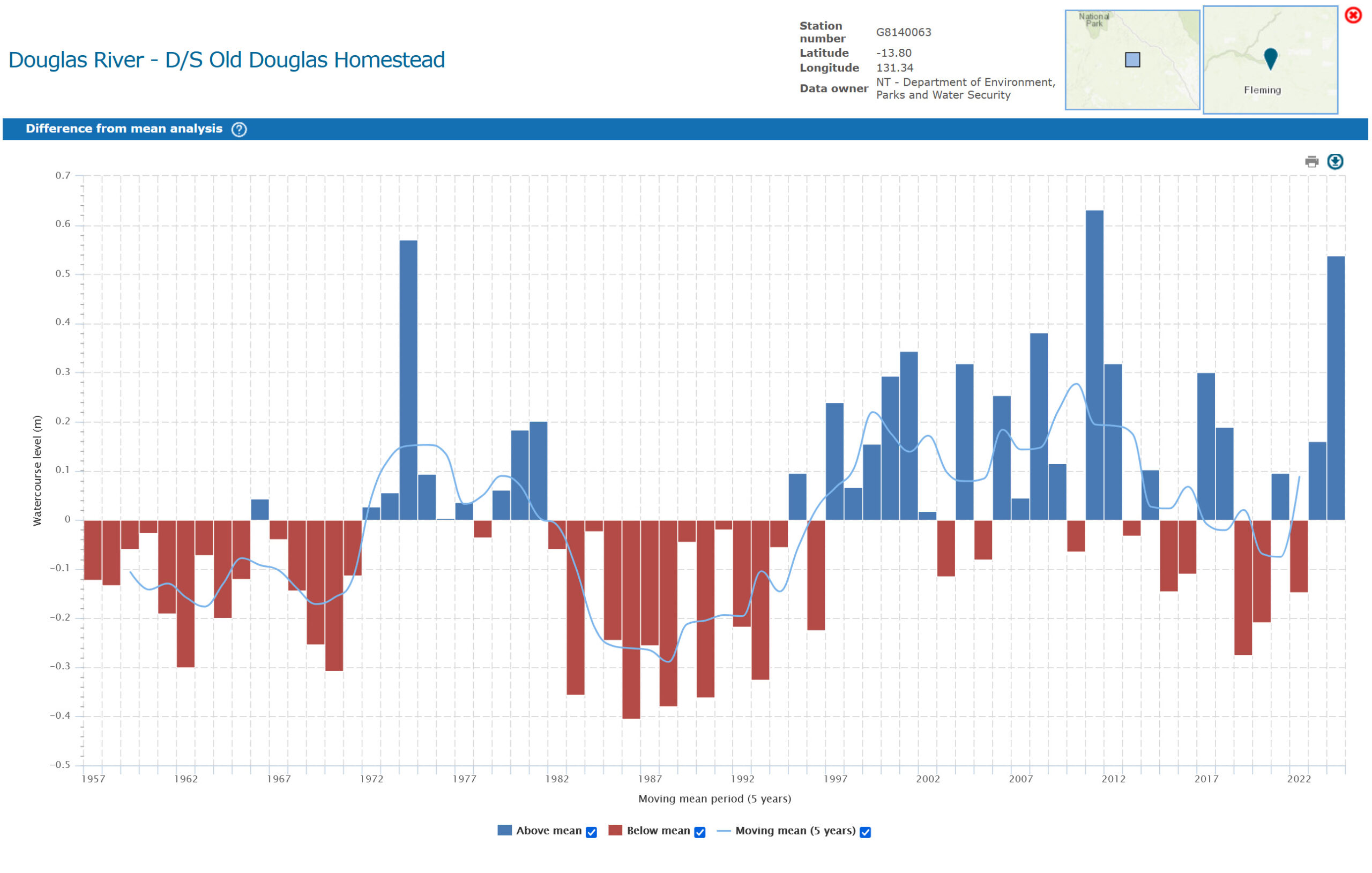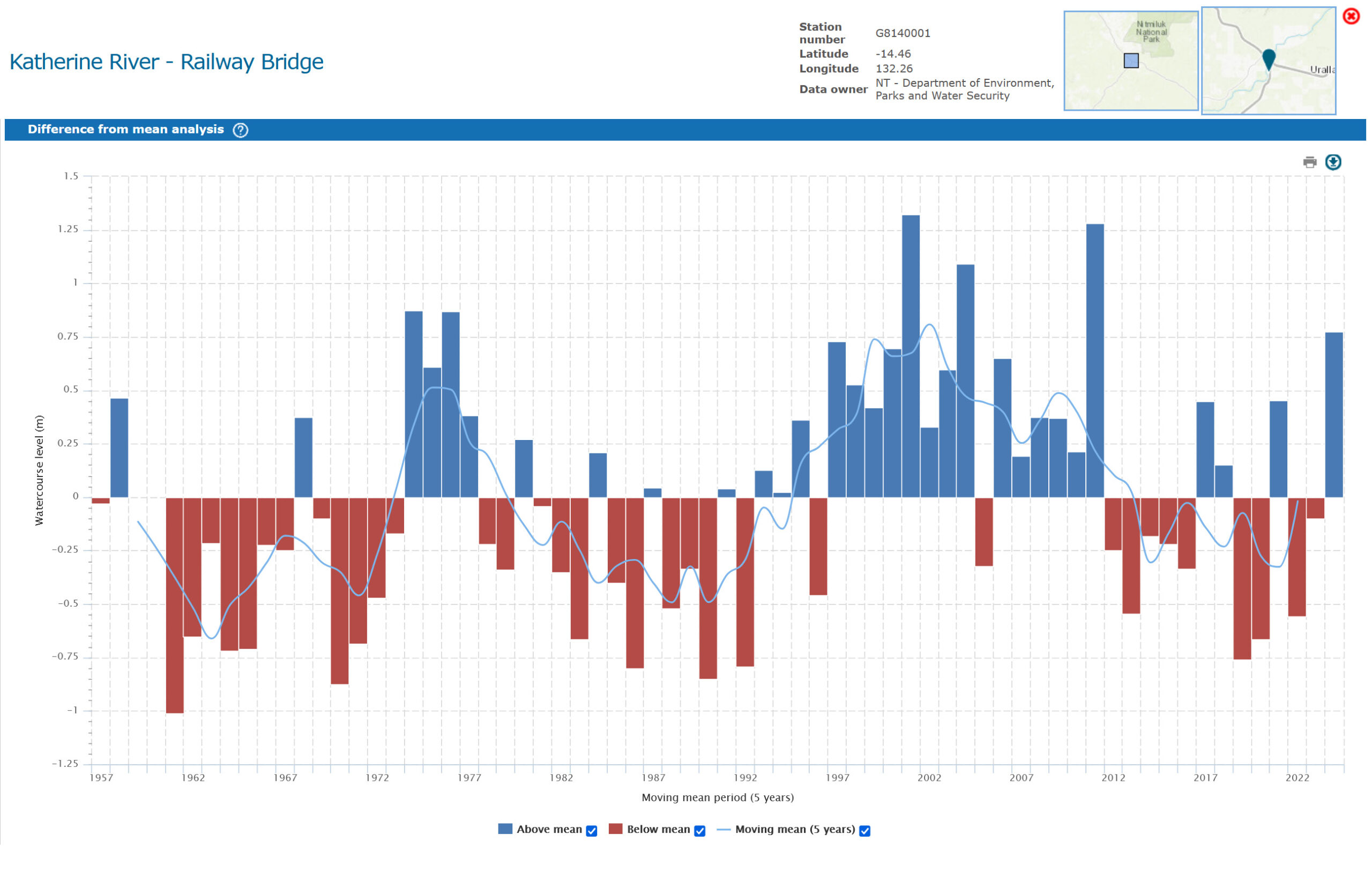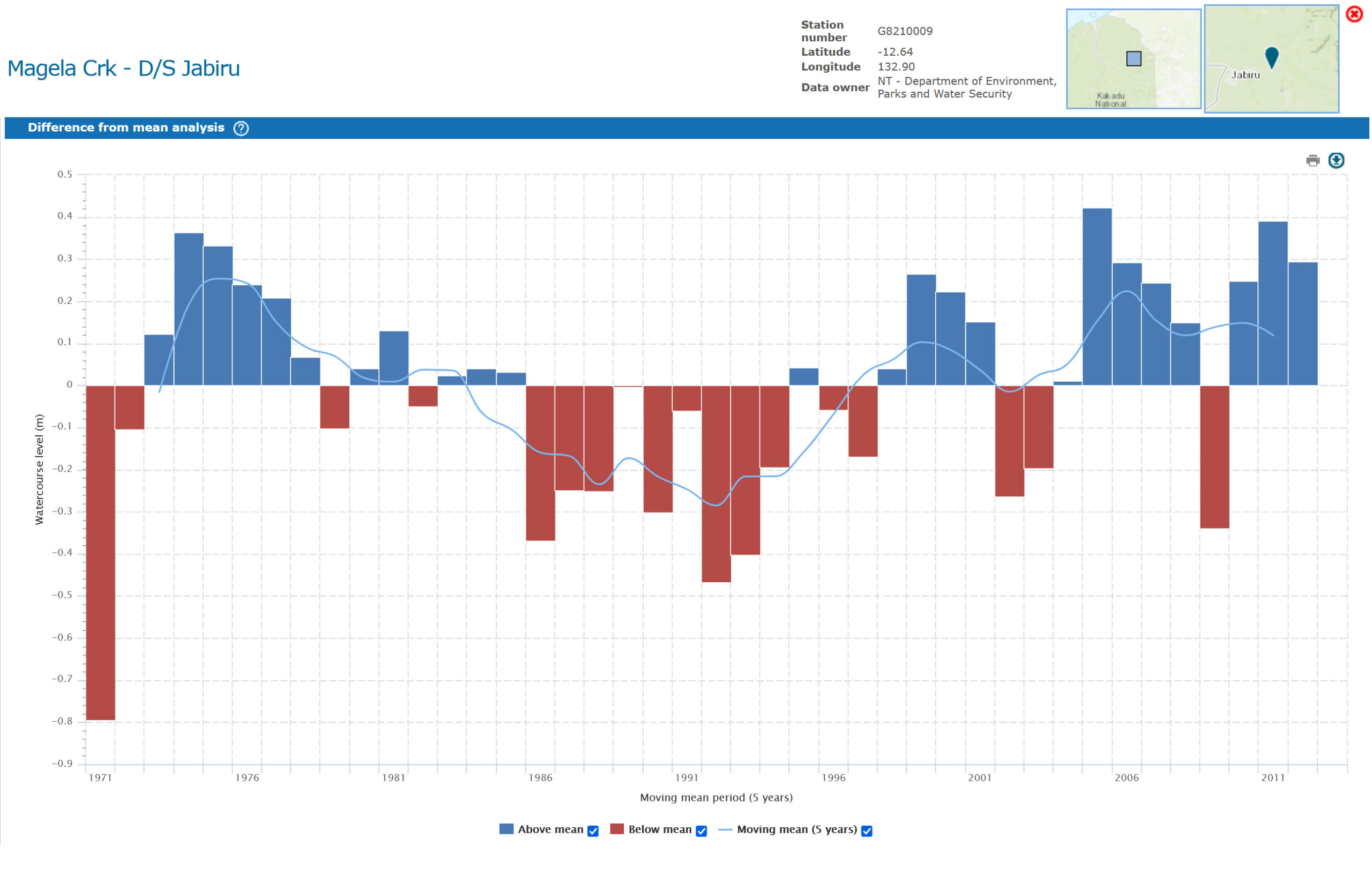WFS Admin




The images above show rainfall at some relevant Top End water gauges.
While the SA suffers a mass fish die-off from likely climate change-related events, the Top End is going from strength to strength thanks to increasing wet season rainfall.
Increase in annual rainfall over past decades
The Top End has had a statistically measurable increase in annual rainfall. For example, a climate-guide report from the Northern Territory Bureau indicates that from a comparison of two 30-year periods (1959-1988 vs 1989-2018), annual rainfall increased by about 110 mm (11%), from around 940mm to 1050mm.
Bureau of Meteorology – wet season / monsoonal rainfall increase
The wet season (monsoon period) rainfall has also increased in some key stations. For instance, Darwin’s wet season rainfall between Nov-Apr increased by 146mm compared to the earlier 30-year period. Daly Waters increased by 81mm.
Bureau of Meteorology
Seasonal shifts and variability
Rainfall in the build-up (the period leading into the wet season, often Oct-Dec) appears less reliable in parts of the Top End, especially the eastern part. That is, large inter-year variability and “false starts” of monsoon rains have been more common. There is also evidence that the earlier and later parts of the wet season (and perhaps associated with the monsoon onset) have become more variable. Some studies note a decrease in rainfall in the early and late wet season in certain parts.
Recent years
In 2024, for example, the Northern Territory as a whole saw rainfall totals well above average, and in some parts of the Top End or NW NT, the highest on record.
What is not fully settled
How much of the observed increase is due to long-term climate change vs natural decadal variability (e.g. ENSO, the Indian Ocean Dipole, Pacific Decadal Oscillation) is still being explored. The timing of the monsoon (onset, duration, breaks) is variable and some trends (later onset in some years) might be emerging, but the confidence is lower. The spatial differences are strong: some parts of the Top End (east vs west) show different trends. Some subregions have more reliable increases, others are more variable.
Overall conclusion
Yes, the rainfall over the Top End has been trending upwards, particularly in the wet season / monsoonal rainfall period and in aggregate annual totals, over the past several decades. But the increases come with more variability—some years of low rainfall, shifts in when rain falls, and differences in how reliable parts of the region are.
Heat is of course the wildcard, the heat trend is upward and may lead to increased billabong mortality and marine heatwaves etc.
